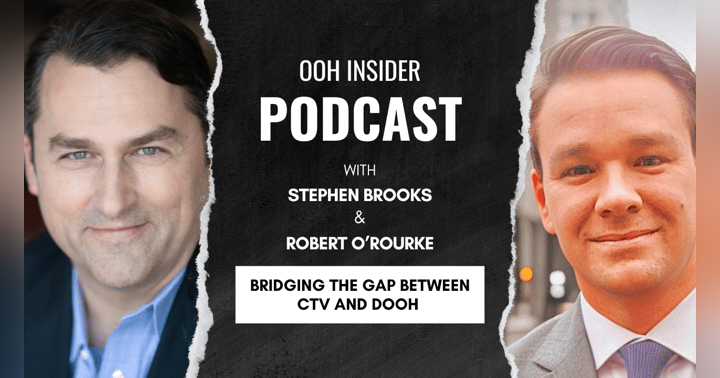Out-of-home (OOH) advertising has long been a powerful tool for brands to reach a wide audience and create brand awareness. Whether it's billboards, bus shelters, or digital signage, OOH ads have the ability to capture the attention of consumers on the go. However, when it comes to measuring the effectiveness of OOH campaigns, many marketers face challenges due to the lack of accurate measurement tools.
Enter Google My Business (GMB), a free and user-friendly platform that allows businesses to manage their online presence across Google search and maps. While GMB is primarily used for local businesses to provide information such as opening hours, reviews, and contact details, it can also be leveraged for OOH advertising measurement. In this comprehensive guide, we will explore how you can use Google My Business to measure the impact of your OOH campaigns and make data-driven decisions.
What is Google My Business?
Before delving into the measurement aspect, let's briefly introduce Google My Business. GMB is a free and user-friendly platform provided by Google for businesses to manage their online presence and interact with customers. It enables businesses to create and update their listing on Google, making it easier for potential customers to find them through search results and Google Maps.
How To Use GMB Insights From OOH Advertising
GMB provides businesses with valuable insights and analytics that can be leveraged to measure the impact of OOH advertising. By analyzing this data, businesses can gain a deeper understanding of how their OOH campaigns are performing and make data-driven decisions to optimize their marketing strategy. Here are a few key ways to maximize ROI using GMB insights:
1. Analyzing Search Queries
GMB allows businesses to track the search queries that led users to their listing. By monitoring these queries, businesses can identify if there is an increase in branded searches or specific keywords related to their OOH advertising campaign. This information can help measure the impact of OOH advertising on brand awareness and customer engagement.
2. Monitoring Website Traffic
Another crucial aspect of measuring OOH advertising's effectiveness is monitoring website traffic. GMB provides data on the number of users who visited a business's website through their listing. By comparing the website traffic before and during an OOH campaign, businesses can assess the campaign's impact on driving online traffic and conversions.
3. Tracking Phone Calls
For businesses that rely heavily on phone calls for customer inquiries and conversions, GMB offers call-tracking features. By enabling this feature, businesses can measure how many calls are generated through their GMB listing during an OOH campaign. This insight can help determine the campaign's effectiveness in driving phone leads and conversions.
4. Monitoring Customer Actions
GMB provides data on various customer actions, such as:
- Requests for directions
- Clicks to your website
- Clicks to call the business
By analyzing these actions, businesses can understand how customers interact with their listing after being exposed to OOH advertising. This information can guide businesses in optimizing their OOH campaigns to drive desired customer actions.
Best Practices for Maximizing ROI
Now that we understand how GMB can be used to measure the impact of OOH advertising, let's explore some best practices to maximize ROI:
1. Ensure Accurate and Up-to-Date Information
To accurately measure the impact of your OOH ad campaign, you must ensure that the brand GMB listing contains accurate and up-to-date information. This includes the business address, phone number, website URL, and opening hours. Having the correct information is the first step to accurately measuring the impact of any advertising, not just OOH.
2. A/B Test Different OOH Creatives
To optimize OOH campaigns for maximum ROI, businesses should consider A/B testing different creatives. By using unique tracking phone numbers or specific call-to-action URLs in different creatives, businesses can measure the effectiveness of each variation. This data can guide future OOH campaigns and help allocate resources to the most successful creatives.
Important Note: By "vanity URL" what we mean is a (preferably) .com URL that goes to whatever campaign landing page you care about. What we don't mean is this - www.myurl.com/a-crazy-link-like-this-that-no-one-cares-about-or-will-ever-remember-or-visit
3. Leverage GMB Insights for Campaign Optimization
Regularly reviewing and analyzing GMB insights is crucial for campaign optimization. By identifying trends, patterns, and performance metrics, businesses can make data-driven decisions to optimize their OOH campaigns. Whether it's adjusting the messaging, targeting specific areas and locations, or reallocating resources, GMB insights provide valuable guidance for maximizing ROI.
Conclusion
While measuring the ROI of OOH advertising has traditionally posed challenges, Google My Business has emerged as a valuable tool for businesses to overcome these obstacles. By leveraging GMB insights, businesses can measure the impact of OOH campaigns, optimize their marketing strategies, and maximize their return on investment. By implementing best practices and staying attuned to the data, businesses can ensure that their OOH advertising efforts are both impactful and profitable.


